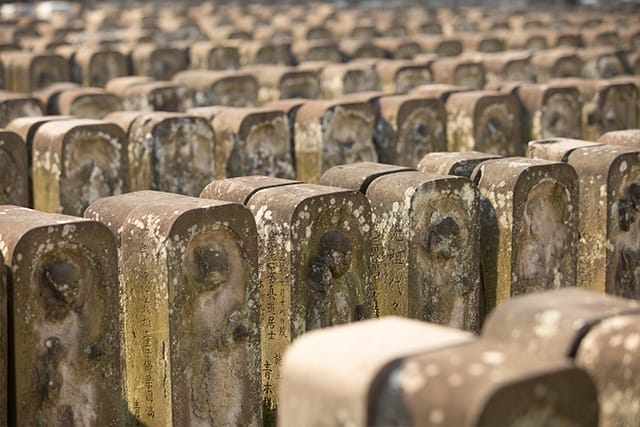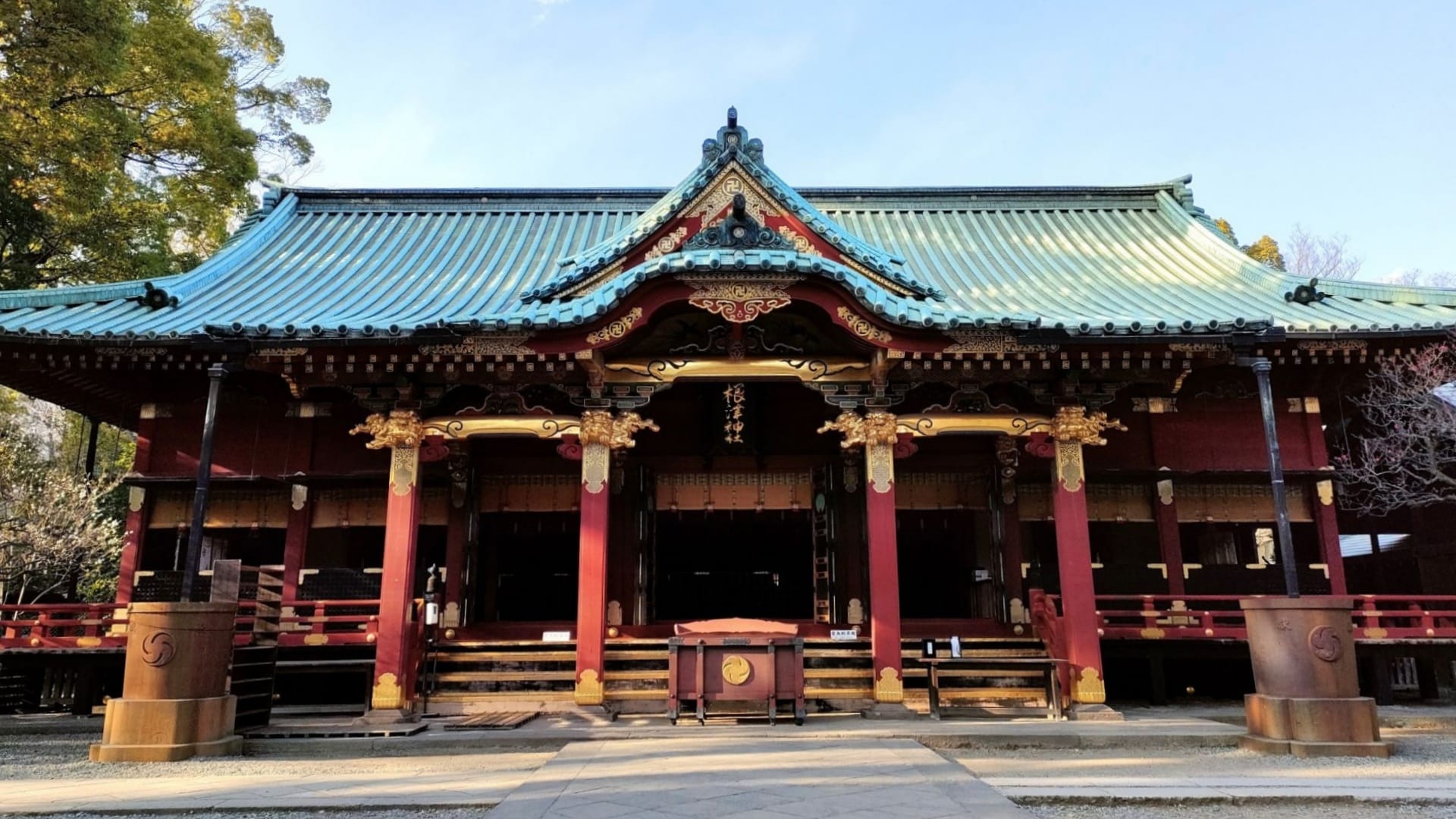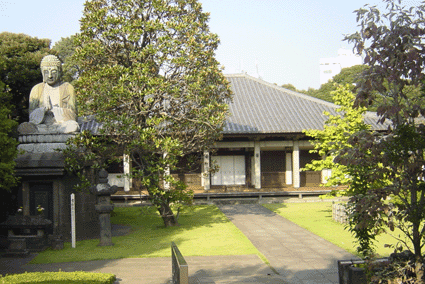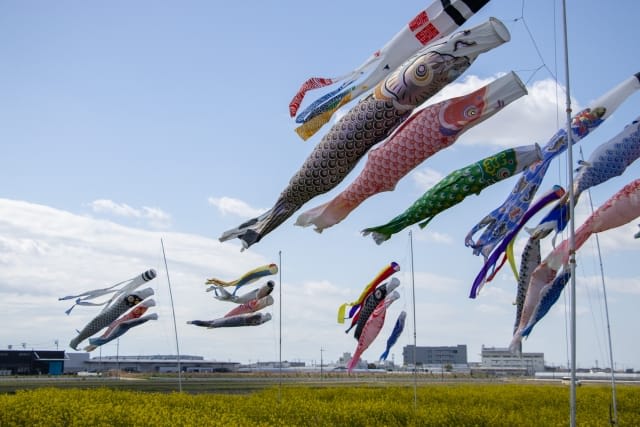6 Temples and Shrines to Visit in Yanaka
Since moving to a neighborhood Shibuya in 2024, I've been visiting many cities in Tokyo including Yanaka Ginza everyday to explore its appeal and discovered spots I can recommend to tourists.
I updated this article in January 2025 to incorporate my findings from this research, along with the latest information for 2025.
Another reason for updating the article is the growing interest in tours that allow visitors to enjoy sightseeing spots and Japanese traditional culture. As these tours gain popularity, Magical Trip's tour, which ranked #1 among all tours on Tripadvisor, has been receiving numerous applications.

If you want to experience the retro atmosphere and authentic Japanese charm of Yanaka Ginza, join the "Yanaka Historical Walking Tour in Tokyo's Old Town." A local guide will show you the most recommended spots in the Yanaka area, where historical sites are scattered throughout.
For those who love retro neighborhoods, we also recommend these two tours. Both can be enjoyed in the towns adjacent to Yanaka, and you can fully experience their charm simply by following guides who know these streets inside and out.
・Asakusa Cultural Walk & Matcha Making Tour
・All-You-Can-Drink Bar Hopping Tour in Ueno
We hope you'll have a wonderful time experiencing everything retro towns have to offer by joining a Magical Trip tour!
Introduction
Tokyo has seen an increase in high-rise buildings and new commercial facilities due to redevelopment, resulting in the demolition of old buildings. However, Yanaka Ginza remains a precious place where you can enjoy the "old Tokyo."
In 1625, temples were built here for the Tokugawa Shogunate, the ruling military government at the time. Many temples were constructed, and others were relocated from different areas, turning it into a town of shrines and temples. Spared from disasters like earthquakes and wars, and preserved by the local residents' efforts due to its intricate landscape hindering redevelopment, the old town scenery has been maintained.
With its shrines, temples, narrow alleys, and cats cared for by residents, it is also known as a "cat town" with a retro atmosphere reminiscent of old Tokyo.
As someone who loves visiting shrines and temples, I'll introduce some must-visit spots in Yanaka Ginza!
What's the difference between shrines and temples?
Japan has two main religions: Shinto and Buddhism. Shinto is Japan's indigenous religion that reveres all natural phenomena as divine. Buddhism, based on Buddha's teachings, was introduced to Japan from India via China and Korea. Shrines are Shinto facilities, while temples are Buddhist ones.
While there are no particular dress codes for Shinto, formal attire is preferable when praying inside buildings for an additional fee. Buddhism prohibits taking life, so leather and fur should be avoided.
The torii gate symbolizes the boundary between the sacred realm and the mundane world. You should bow slightly before passing through it. The path beyond is considered the gods' passage, so there are manners to observe, such as avoiding the center. Research them beforehand for a more enjoyable experience!
Recommended Shrines in Yanaka
Nezu Shrine
Source: Nezu Shrine official website
Nezu Shrine is one of Tokyo's oldest and most beautiful shrines, with a history dating back 1,900 years. The current structures, completed in 1706, are precious buildings that have survived disasters and wars, making them historically valuable. The colorful and intricately decorated buildings are also noteworthy.
This nature-filled shrine is especially recommended during the "Azalea Festival" in April when around 3,000 azalea plants of 100 varieties bloom, creating a breathtaking scene with the shrine buildings. Although an admission fee of 500 yen is charged to view them up close, it's worth it for their beauty.
The cherry blossoms in March-April and autumn foliage from late November to early December are also splendid. With a pond inhabited by carp, you can enjoy a Japanese garden anytime.
Don't forget to visit the "Thousand Torii Gates" at Otome Inari Shrine within Nezu Shrine, which I'll explain later – it's truly wonderful!
The peak azalea season is mid-April, so visiting on a weekday is recommended to avoid crowds. Even on holidays, arriving around 9:30 AM at opening time allows you to view them leisurely.
<Information>
・Address: 1-28-9 Nezu, Bunkyo-ku, Tokyo
・Phone: 03-3822-0753
・Viewing Hours: Jan 6:00-17:00 (1st: 0:00-19:00), Feb 6:00-17:30,
Mar 6:00-18:00, Apr-May 5:30-18:00, Jun-Aug 5:00-18:00, Sep 5:30-18:00,
Oct 5:30-17:30, Nov-Dec 6:00-17:00
・Souvenir Shop Hours: 9:30 - 30 mins before closing
*Sundays & Holidays: 9:00 - , Jan 1st: 0:00 -
・Closed: None
・Website: https://nedujinja.or.jp/about/
・Azalea Garden Hours: 9:30-17:30
・Admission Fee: 500 yen (cash only)
・instagram: https://www.instagram.com/nedujinja_official/?hl=ja
Otome Inari Shrine
Source: Nezu Shrine official website
Otome Inari Shrine is located within Nezu Shrine. My recommendation here is the "Thousand Torii Gates," a tunnel-like path lined with vermilion wooden gates.
Though smaller in scale than the famous Fushimi Inari Taisha Shrine in Kyoto, it has the highest number of torii gates in Tokyo. Passing through the gates is believed to dispel negative energy.
Whenever I visit Yanaka, I make sure to stop by here. With its beautiful red torii gates, it's also a popular photo spot, so I recommend going during off-peak hours like weekday mornings to avoid crowds.
As the goddess enshrined here is associated with agriculture and femininity, Otome Inari Shrine is believed to bless relationships, marriage, and romance, attracting many seeking love.
Recommended Temples in Yanaka
Tennoji Temple
Tennoji Temple, built in 1274, is the oldest temple in the Yanaka area.
Although it previously included part of the Yanaka Cemetery grounds, the temple has become smaller after transferring land management to the government. With its beautiful buildings and garden-like space, a stroll around the compact temple takes only about 10 minutes. As it doesn't attract many tourists, I visit when I want to escape the hustle and bustle.
My recommendation is the bronze seated Buddha statue right after the entrance. Smaller than the famous one in Kamakura, it's nonetheless exquisite. The weeping cherry blossoms blooming in March-April are breathtakingly beautiful, providing a serene atmosphere.
As it's close to the station, I recommend stopping by.
<Information>
・Address: 7-14-8 Yanaka, Taito-ku, Tokyo
・Phone: 03-3821-4474
・Viewing Hours: 9:00 - 17:00
・Closed: None
・Website: http://www.tendaitokyo.jp/jiinmei/tennoji/
Kan'eiji Temple

Kan'eiji Temple was once one of Japan's largest and most prestigious temples during its peak, with vast grounds that included the present-day Ueno Park.
Built in 1625 by the ruling Tokugawa Shogunate (1603-1868) to wish for stability and the people's well-being, it houses the graves of 6 out of the 15 Tokugawa shoguns.
Many buildings were destroyed during the war that brought an end to the Shogunate, and much of the temple grounds came under the new government's control. Despite damages from earthquakes and wars, some original structures like the five-story pagoda remain protected as historically important.
I love the soaring five-story pagoda. While currently visible from Ueno Park, entering Ueno Zoo allows you to get closer. Combined with the cherry blossoms in March-April and autumn foliage from late November to early December, it's a scenery you'll want to gaze at endlessly.
<Information>
・Address: 1-14-11 Uenosakuragi, Taito-ku, Tokyo
・Phone: 03-3821-4440
・Viewing Hours: 9:00 - 17:00
・Closed: None
・Website: https://kaneiji.jp/about#gsc.tab=0
・instagram: https://www.instagram.com/kaneiji_tokyo_ueno/
Jomyo-in Temple

Jomyo-in Temple houses around 30,000 stone Jizo statues, making it a unique temple founded in 1666. It flourished due to its connection to the mother of the 4th Tokugawa Shogun.
Jizo is believed to mercifully save those suffering, especially the weak like children. As an act of gratitude for Buddhist teachings and to have the populace protected, the head priest in 1879 vowed to increase the Jizo count to the term "84,000" signifying an immense number, continuing to this day.
My recommendation here is definitely the Jizo statues. Seeing 30,000 lined up is an astounding sight rarely witnessed elsewhere, so don't miss it!
<Information>
・Address: 2-6-4 Uenosakuragi, Taito-ku, Tokyo
・Phone: 03-3828-2791
・Viewing Hours: 9:00 - 17:00
・Closed: None
・Websites: https://uenosakura-joen.jp/jyomyoin/
・instagram: https://www.instagram.com/explore/locations/264538305/
Kannonji Temple
Source: Tripadvisor
Kannonji Temple was built in 1611 with a long history.
My recommendation is the 37.6m clay wall on the temple's south side, known as a symbol of Yanaka. This alternating layered clay and tile (traditional Japanese fired clay roof tiles) wall is protected as an important architectural structure, as few examples of this traditional Edo period (1603-1868) style remain today.
This temple was also a meeting place for the samurai involved in the famous "Revenge of the Forty-Seven Ronin" incident, as two monk brothers participated in the vendetta. There is a tower erected for their memorial.
With scenery transporting you back in time, it's one of my favorite temples reminding Japanese of the past.
The temple's gorgeous "goshuincho" (calligraphy stamp book) that serves as proof of your visit is a collectible, so be sure to get one after prayers!
<Information>
・Address: 5-8-28 Yanaka, Taito-ku, Tokyo
・Phone: 03-3821-4053
・Viewing Hours: 9:00 - 16:00
・Closed: None
・Website: http://yanaka-kannonji.jp/
・instagram: https://www.instagram.com/yanaka_kannonji_temple/
As introduced, Yanaka is an area rich in shrines and temples. With many historic buildings preserved, it's recommended for a peaceful stroll away from bustling areas.
While exploring the shrines and temples is fulfilling enough, also check out lovely cafes, souvenir shops with adorable cat goods, shopping streets offering delicious Japanese street food, and more for the full experience.
If you wish to fully experience everything within 3.5 hours, I recommend Magical Trip's Yanaka Walking Tour guided by locals familiar with Japanese culture, traditions, and daily life.Experience the traditional charms distinct from Shibuya and Shinjuku in the retro Yanaka area!
Check the tour >> Yanaka Historical Walking Tour in Tokyo's Old Town







